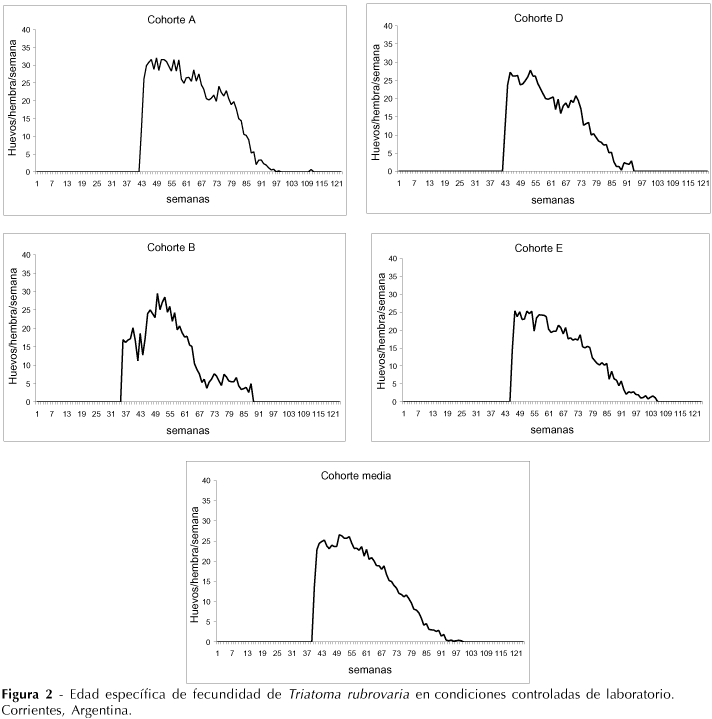OBJECTIVE: To obtain T. rubrovaria population parameters in order to describe its demographic characteristics. METHODS: The study was carried out in the laboratory of Arthropods, Corrientes, Argentina, from October 2000 to February 2003. Eggs were grouped to form five 100-egg cohorts. Insects were fed on chickens (Gallus domesticus). The cohorts were monitored weekly and kept under controlled temperature (28±3°C) and relative humidity (63±10%). A life table was constructed and other vital statistics were calculated and recorded. RESULTS: Higher mortality was recorded in the first through the fourth nymphal stadium. A constant decrease was seen from the fifth nymphal instar. Life expectancy dropped linearly after overcoming the critical stages. Adults mean survival was 50.2 weeks. The first oviposition was after 40.6 weeks. The fecundity was 859.6 eggs with an average 22.8 eggs per female. The reproductive period was 37.7 weeks. The generation time was 55.3 weeks and the net reproduction rate was 133.7. The intrinsic rate of weekly increment was 0.088. In a stable age distribution the population would be composed of 25.3% eggs, 72.3% nymphs and 2.4% adults. Adults accounted for more than 70% of the total reproductive value. CONCLUSIONS: Triatoma rubrovaria had a long survival as imago, a late first reproduction and a low intrinsic rate of natural increase.
Triatoma life; Triatoma life





